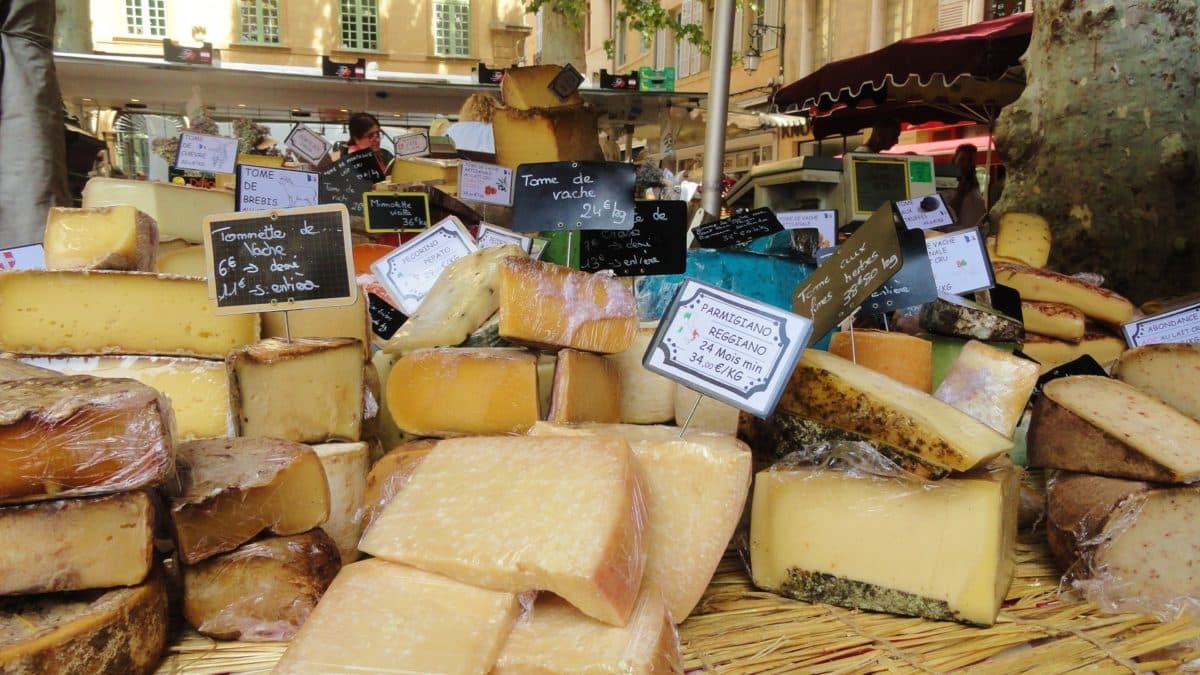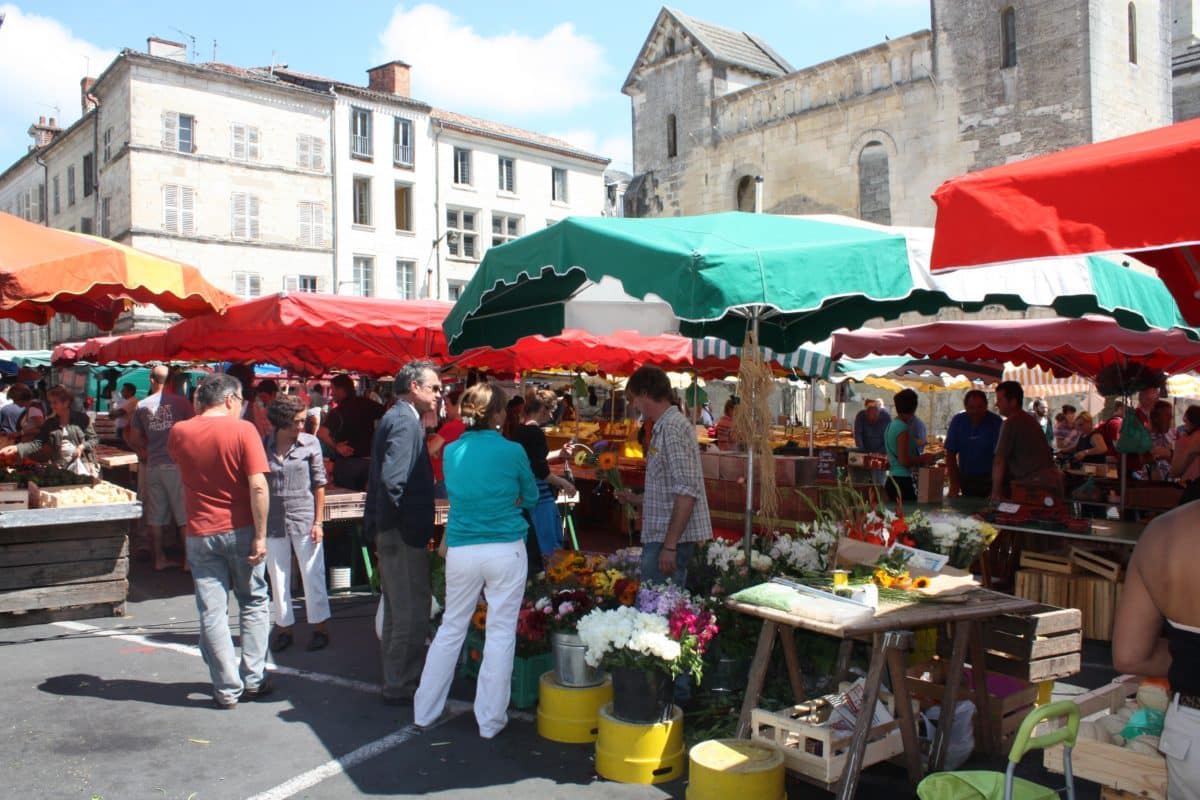As a student in Aix-en-Provence, I fell in love with the French way of life. There I was introduced into something as equally profound as French Literature – the French way with food. For the French, a meal prepared with the best ingredients available, no matter how humble or haute, is the nexus of daily life. The importance of food in French culture is ingrained to such a degree that French cuisine was designated by UNESCO as an intangible world heritage. We are enthralled by the importance, even the romance, of food in France and the role that it plays in daily life, but how do we translate the experience to our lives back home?
That’s what I’ve been trying to do, in one way or another, since that first encounter with French food and life when I was 20 years old. At 27 I moved to Provence and lived a rural life for over two years, keeping goats and making cheese, gathering wild herbs and mushrooms, and cooking from a potager garden. Although my husband and small children and I returned to California, where we immediately planted a potager garden, I’ve been back to my modest home in Provence almost every year since that first departure, always learning, always discovering more about food and the way of life.

A French market, even a supermarket, brings it all into focus – the ingredients from the barnyard, the wild, the orchard, the market and potager gardens, the sea and the rivers – the French draw from all of these to compose a meal. Cows, sheep, and goats are the source of hundreds of different cheeses, as well as meat. Chickens and other poultry provide eggs and meat, and from the essential pig comes France’s famous charcuterie as well as cuts of meat. Wild mushrooms, herbs, truffles, and game reflect the seasons. From the orchards come nuts and fruits, and of course vineyards supply wine.

Photo credit: Pixabay
Market gardens and home gardens, or potagers, provide every aspect of vegetables, from winter’s cardoons to summer’s eggplants and tomatoes. From France’s waterways and its thousands of miles of coastline come fish and shellfish.
Market gardens and home gardens, or potagers, provide every aspect of vegetables, from winter’s cardoons to summer’s eggplants and tomatoes. From France’s waterways and its thousands of miles of coastline come fish and shellfish.

I live most of the year in Northern California, an hour or so from Berkeley, San Francisco and the Napa wine country. The farmers, ranchers, cheesemakers, and other artisans produce some of the most stellar ingredients in the nation. The region’s farmers markets are among the most celebrated in the nation. Many of the restaurants are considered among the best in the world.
And yet.
In a village near my house in Provence, a village of 1500, there is a new supermarket, Super U. It has not one, but three in-house butchers. In the fresh meat counter, on a recent trip, I found a half dozen different cuts of veal, every cut of pork, lamb, and beef imaginable, plus my beloved innards such as kidney, sweetbreads and tripe. These are items that I have to special order from local butchers around Northern California, if I can get them at all.
I was able to buy, right from the counter, enough pieds et pacquets (lamb tripe packets filled with a savory garlic and parsley filling, plus lamb’s feet) for a dinner party for six people. Cost? About $12.00. I bought a huge head of escarole to make a salad, and some goat cheese and honey for dessert.
I’ve written numerous cookbooks and garden books on the subject of French food and gardening, and it is why I founded La Vie Rustic – Sustainable Living in the French Style, a product line and on-line store to try to help others accomplish that wonderful feeling that the French way brings to us, but here in our lives in the United States.
What translates? We might not be able to find large, full-hearted escarole in our local supermarkets, but we can grow them in a small potager garden, for example, along with other vegetables.
Growing French heirloom vegetables yourself is a source of great pleasure from start to finish. Reading about the history of some of the vegetables, like Romaine Rouge d’Hiver lettuce, first written about in the 1800s, or Maussane de Carouby peas, a long podded pea called a mangetout, with edible pod and fully formed peas, grown for more than 100 years in Maussane in the Bouche de Rhone region of Provence, near St. Remy, is its own reward. By planting the seeds, caring for the emerging seedlings and plants, and finally from the harvest to the dinner, you capture the French experience of living with the seasons, and understanding the quality and peak of freshness that are the hallmarks of the best ingredients. There are fruits as well. Planting an heirloom French fig or other heirloom tree aligns you with history.
How do I choose the seeds to import for La Vie Rustic and provide all the historical, botanical, and cultivating information that accompanies them? I scour French horticultural magazines and catalogs, culinary history books and gardening books to find authentic seeds. I’ve visited the growing fields of the great French seed companies, some now gone, like Vilmorin, founded in the 1700s, and I’ve worked alongside market growers to learn their techniques. I visit the gardening shops scattered throughout France, getting a sense of what contemporary gardeners are seeking. How do I know they are truly worth growing? Since the early 1970s when I lived in rural France, and later, in the early 1980s when I founded Le Marche Seeds International, I’ve been cultivating all these vegetable in my own potager garden, and cooking with the rewards year round, year after year.
Cooking with seasonings that are traditional for French foods is another way to savor the French way. Sprinkling an Herbes de Provence mix, made with impeccably harvested and selected herbs, over a log of goat cheese, then drizzling it with extra-virgin olive oil is as simple, yet authentic, a dish as you could offer. A favorite French salt, Sel de Guerande, flavored with bits of dried fig or apricot, or even seaweed, is a way to bring a taste of France into your kitchen. A fortuitous visit to the salt ponds of Guerande in Brittany, which have been used since Roman times to produce salt from the sea, assured me of the authenticity of the salt that I import.
For household and kitchen items for La Vie Rustic, I wander the brocante markets, looking for vintage items either to buy and resell, to repurpose, or to replicate. A set of unused vintage linen sheets for example, became hand-sewn, oversize napkins. A local California ceramicist recreated my cherished hand-thrown ceramic salt jar, complete with its stencil ‘Gros Sel’ and a natural cork stopper. Another ceramicist replicated a Provencal gratin dish for me, as well as salt cellars in the colors of Provence.
The inspiration for a sustainable life in the French style is everywhere – in the brocante markets, in the supermarkets, in cafes and restaurants and in the natural world. I try to look at what I discover, experience, and find and seek a way to translate it to enrich our lives here, with memories of France. ![]()
